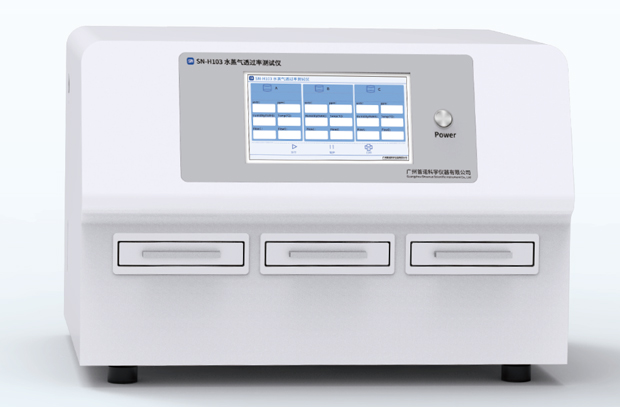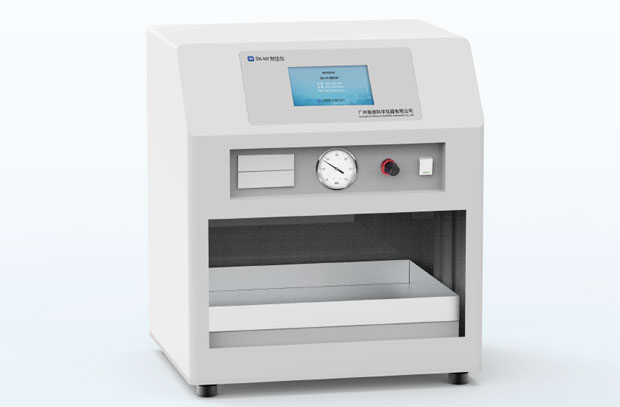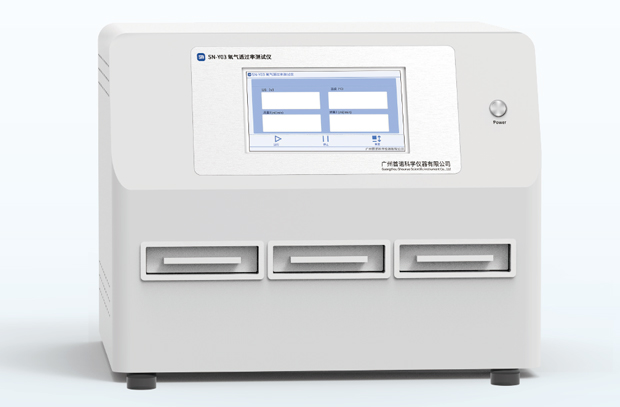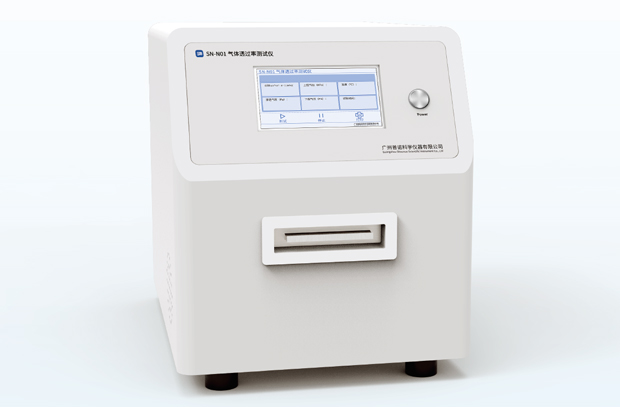Abstract
This article provides an in-depth analysis of the core working principles, mainstream testing methods (gravimetric method and infrared sensor method), key purchasing considerations, and multi-industry applications of the Water Vapor Transmission Rate (WVTR) Tester (also known as Moisture Permeability Tester). It offers a comprehensive WVTR testing solution to ensure the barrier properties and safety of product packaging.
1. Understanding Water Vapor Transmission Rate: Why It Acts as the "Quality Guardian" for Products?
Imagine a pack of biscuits that turns soft due to moisture absorption, a pill that loses its efficacy because of dampness, or a "breathable" outdoor jacket that makes the wearer feel stuffy during activities. The root cause of these issues often lies in the insufficient water vapor barrier capacity of the materials used. Water Vapor Transmission Rate is precisely the key physical indicator that quantifies this capacity of materials.
The Water Vapor Transmission Rate Tester, professionally also called the Moisture Permeability Tester, is a laboratory device specifically designed to accurately measure this indicator. It plays the role of a "quality guardian" for products in fields such as food, pharmaceuticals, medical devices, electronic components, new energy, and textile packaging. It is directly related to the shelf life, safety, functionality, and reliability of products.
2. Core Revealed: How Does a Water Vapor Transmission Rate Tester Work?
Currently, the mainstream WVTR testing technologies in the market are mainly divided into the following two types, which together form the technical cornerstone for accurately evaluating the moisture permeability of materials.
2.1 Gravimetric Method (Cup Method)
• Principle: The sample is hermetically sealed on a moisture-permeable cup containing a desiccant or distilled water. The cup is then placed in a test environment with specific temperature and humidity. The rate of water vapor transmission through the sample is calculated by periodically weighing the changes in the weight of the moisture-permeable cup.
• Representative Products: Shounuo SN-W01 / SN-W103 Water Vapor Transmission Rate Testers.
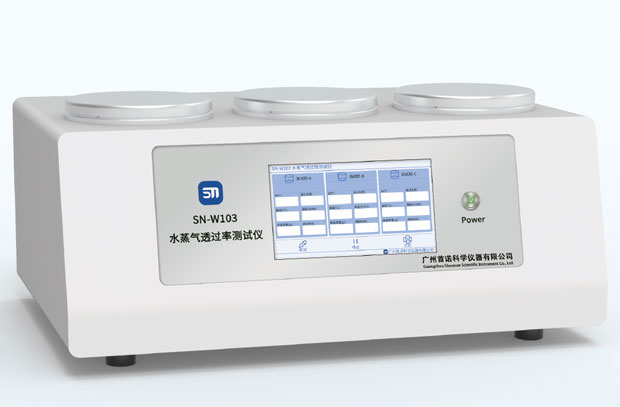
• Features:
◦ Advantages: It has a long history, mature standards, and relatively low equipment purchase cost.
◦ Disadvantages: The testing cycle is long, the degree of automation is low, and the results are susceptible to manual operations and environmental fluctuations.
• Applicable Standards: GB/T 1037, ASTM E96, JIS Z0208, etc.
2.2 Infrared Sensor Method
• Principle: It utilizes the characteristic of water vapor absorbing infrared rays of specific wavelengths. The sample is clamped in a test chamber. One side of the chamber is a high-humidity environment, and the other side is filled with dry carrier gas (such as nitrogen). After water vapor passes through the sample, it is carried to the infrared sensor by the carrier gas. The water vapor transmission rate is directly and accurately calculated by detecting the changes in the amount of infrared absorption.
• Representative Products: Shounuo SN-H Series Water Vapor Transmission Rate Testers (e.g., SN-H01, SN-H03)
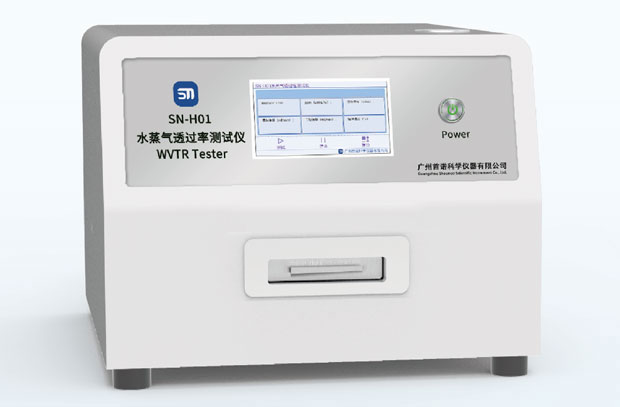
• Features:
◦ Advantages: High testing accuracy, fast speed, good repeatability, a wide testing range, and a high degree of automation and intelligence.
◦ Disadvantages: High technical threshold for the equipment and high purchase cost.
• Applicable Standards: ASTM F1249, ISO 15106-2, GB/T 26253, TAPPI T557, etc.
Comparison Table of Methods
|
Characteristics
|
Gravimetric Method (Cup Method)
|
Infrared Sensor Method
|
|
Testing Principle
|
Weight calculation
|
Infrared absorption detection
|
|
Testing Accuracy
|
General
|
Extremely high
|
|
Testing Efficiency
|
Slow (several days to weeks)
|
Fast (several hours)
|
|
Degree of Automation
|
Low, dependent on manual work
|
High, fully controlled by computer
|
|
Testing Cost
|
Low equipment cost, high labor cost
|
High equipment investment, low labor cost
|
|
Main Applications
|
Basic R&D, routine quality inspection
|
High-end R&D, precise quality control, arbitration and identification
|
3. How to Choose a Suitable Moisture Permeability Tester?
Faced with a variety of water vapor transmission rate testers on the market, how to make a wise choice? Please consider from the following key dimensions:
3.1 Clarify Testing Requirements
• Compliance with Standards: Which testing standards (such as ASTM, ISO, GB) are mandatory in your industry or required by your customers?
• Material Types: Do you mainly test plastic films, sheets, non-woven fabrics, or complete packaging units?
3.2 Evaluate Core Performance
• Testing Range: Ensure that the range of the instrument can cover the WVTR range of all your materials to be tested.
• Accuracy and Repeatability: These are the core of the instrument's reliability and directly determine the credibility of the data.
• Testing Efficiency: Pay attention to the number of samples that the instrument can test at one time and the average time required to complete a single test.
• Automation and Intelligence: Fully automatic temperature and humidity control, data recording, and report generation can greatly improve laboratory efficiency.
3.3 Consider Brand and Services
• Choose brands with strong technical strength and a good market reputation.
• Confirm whether the supplier can provide comprehensive services such as installation, training, calibration, and after-sales maintenance.
4. Industry-Wide Application Map of Moisture Permeability Testers
The application of water vapor transmission rate testers has penetrated into all aspects of modern industry:
• Food Packaging: Accurately test the packaging films of snack foods such as potato chips, nuts, and coffee to prevent moisture absorption and deterioration, and retain freshness and crispness.
• Pharmaceutical Packaging: Ensure the moisture barrier properties of pharmaceutical blister packaging and sterile medical device packaging, strictly comply with pharmacopoeia regulations and GMP management standards, and guarantee medication safety.
• Electronic Components: Protect the circuit boards and components inside precision electronic products such as mobile phones and sensors from moisture erosion and failure.
• Textile and Apparel: Objectively evaluate the moisture permeability (commonly known as "breathability") of outdoor sportswear and protective clothing fabrics (such as GORE-TEX) to enhance wearing comfort.
• New Energy and Building Materials: Test the water and oxygen barrier properties of lithium battery aluminum-plastic packaging films, and evaluate the anti-condensation and durability of building insulation materials.
5. Frequently Asked Questions (FAQ)
Q1: Are the Water Vapor Transmission Rate Tester and the Moisture Permeability Tester the same device?
Yes, they are two common names for the same type of device, and they are identical in function and application.
Q2: What impact does the laboratory environment have on the test results?
The stability of temperature and humidity is crucial. The laboratory should be equipped with air conditioning and dehumidification equipment to ensure that the environmental temperature and humidity meet the standard requirements, and avoid fluctuations interfering with the test results, especially those of the gravimetric method.
Q3: Do instruments require regular calibration? What is the calibration cycle?
Yes, regular calibration is the lifeline to ensure data accuracy. The recommended calibration cycle is one year. Calibration is usually performed using certified reference materials. For specific details, please follow the recommendations of the instrument manufacturer and laboratory management standards.
Q4: What are the possible causes of inaccurate test results?
Common causes include: insufficiently sealed samples leading to leakage, uncontrolled temperature and humidity in the test environment, contaminated or uncalibrated sensors, and failure of operators to strictly follow the standard procedures.
Choosing an accurate and reliable Water Vapor Transmission Rate Tester is a key step in building a high-quality product packaging system.
Guangzhou Shounuo Scientific Instrument Co., Ltd. provides a complete set of moisture permeability tester solutions, ranging from basic gravimetric method (SN-W series) to high-end infrared method (SN-H series). Our instruments are built with a "scientific mindset" and are committed to becoming the most trustworthy partner in your laboratory.
Contact us now to obtain exclusive product selection suggestions, technical demonstrations, and solutions!







